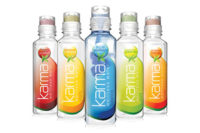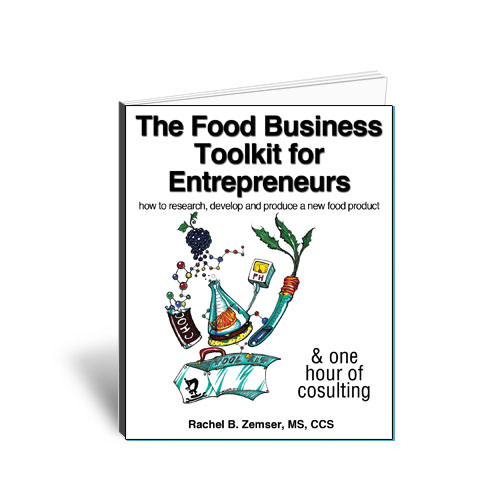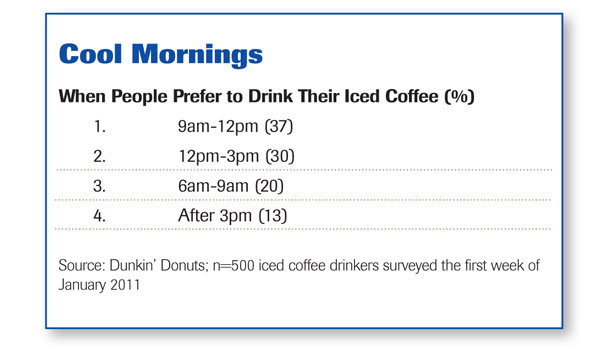Refreshing the Beverages








November 2011/Prepared Foods -- One of the year’s most innovative beverage introductions in foodservice was actually an opportunity for consumers to make their own flavor mixes. The Coca-Cola Freestyle machine debuted in 2010, but gained noticeable traction in 2011 and proved key to the company’s 125th anniversary celebrations. In May, each of the 400+ outlets featuring a Coca-Cola Freestyle machine (a self-service dispenser allowing the consumer to mix-and-match any of dozens of Coca-Cola brands) added 19 new brands previously unavailable anywhere. The added brands included: Coke with Orange, Coke with Lime, Coke with Raspberry, Coke with Lemon, Cherry Vanilla Coke, Diet Cherry Vanilla Coke, Caffeine-Free Diet Cherry Vanilla Coke, Cherry Vanilla Coke Zero, Sprite with Orange, Sprite with Vanilla, Sprite Zero with Orange, Sprite Zero with Vanilla, Barq’s Vanilla, Diet Barq’s Vanilla, Seagram’s Lemon Lime Seltzer, Minute Maid Fruit Punch Lemonade, Minute Maid Light Fruit Punch Lemonade, Hi-C Raspberry Lime and Hi-C Orange Vanilla.
Soda remains the most-consumed beverage in the U.S., with the average consumer chugging nearly 45 gallons of it in 2010. According to Ad Age’s “Leading National Advertisers” report, Coke spent $267 million last year, while Pepsi shelled out $154 million, and Dr Pepper spent $104 million.
Among alcoholic beverages, beer held on to its top spot, though spirits and wine, perceived by some to be more healthful, have been gaining ground in the past few years. Still, last year, the average American imbibed nearly 21 gallons of brew, helped in no small part by major marketing dollars, to the tune of $1.25 billion spent on measured media.
The wine segment marked its 17th consecutive year of case gains, with the Beverage Information Group attributing that success “directly to the improving economy and the resulting increase in consumer confidence.” According to the Beverage Information Group’s 2011 Wine Handbook, overall wine consumption rose 2.1% to 303.1 million 9-liter cases in 2010, and consumers are slowly returning to dining out. Total wine dollars grew to $26.9 billion last year, with on-premise accounting for 44.1%--a gain of 2.5% from 2009 and a distinct change from the previous two years, when the recession directly affected on-premise sales.
Joining that field this year was Hiro Sake, a new, premium spirit imported from Japan, which debuted in the U.S. market in exclusive restaurants and select retailers across the New York City metropolitan area.
Hiro Sake is a line of premium, hand-crafted Japanese sakes: Junmai Sake (Hiro Red) and Junmai Ginjo Sake (Hiro Blue). The pair is brewed from golden rice fields and water from the subterranean riverbeds skirting the Miomote River in Murakami. Traditionally brewed and served warm, Junmai Sake provides peppered pear and banana aromas and had a suggested retail price of $29.99. Junmai Ginjo Sake boasted delicate vanilla maple nut fudge and spicy pear custard aromas with fresh, banana undertones that could be enjoyed chilled, over ice or in a cocktail. It retailed for a suggested $39.99.
Chocolate Treats
At the other end of the consumer spectrum, foods and beverages in school cafeterias have proven a hot topic (borderline controversial, for that matter) over the past year, with some parents and citizens striving to have chocolate milk banned from school menus. Los Angeles, for instance, barred the sale of all flavored milks. To counter such moves, a pair of launches tried to make school foodservice milk a healthier option. Dean Foods introduced what it believed to be a solution: TruMoo is a chocolate milk promising 10-15% fewer calories, 15-20% less sugar and no high-fructose corn syrup. Over half the sugar in TruMoo is lactose, and Dean reduced up to 6g of sugar per serving compared to its previous varieties. It contains 10g of added sugar.
A similar introduction came from Prairie Farms Dairy, which noted chocolate milk as the flavor-of-choice for students and “a healthy alternative to sodas and fruit juices.” Prairie Farms reformulated its flavored milks into a fat-free, lower sugar product in such varieties as chocolate, strawberry, cookies ’n cream and vanilla, which also promised no high-fructose corn syrup, fat or artificial sweeteners, or growth hormones.
Rebecca Leinenbach, sales program director, Prairie Farms Dairy, explained, “The new formulation is a direct result of ongoing conversations with school foodservice professionals about the stricter standards for school meals that will take effect in the 2012-2013 school year.” Prairie Farms’ fat-free chocolate milk contains 130 calories per 8oz serving and 11g of added sugar, compared to the previous 1% chocolate milk formulation with 170 calories and 16g of added sugar. The new fat-free flavors also meet the Healthier U.S. School Challenge (HUSSC) Guidelines and the Alliance for a Healthier Generation Beverage Guidelines.
Of course, chocolate is not merely for children. In fact, one introduction found some coffee drinkers liking a brewed drink as much as their beloved java. Crio Brü turned heads in the coffee world, at least in coffee shops across Utah, and was slowly making its way into restaurants and coffee shops nationwide. Described as a “healthy brewed cocoa drink,” Crio Brü promised the essence and health properties of dark chocolate and is said to brew just like coffee. Made with one ingredient--100% pure, premium cocoa beans, roasted and milled to produce flavorful cocoa grounds, Crio Brü could be found in three varieties--Cavalla, Vega Real and Coca River. Coconut and cinnamon flavors permeate Cavalla; strawberries and green tea highlight Vega Real; and green banana and blackberries accent Coca River.
Crio Brü is roasted and brewed and, therefore, has the consistency, roasted flavor and complexity of a fine coffee. Because it is made with cocoa beans, its primary flavor is chocolate. Just as with coffee, sweetener and creamer can be added to taste, or it can be consumed black for a bittersweet, low-calorie hot drink. Consumers who cannot part with their coffee kick can use Crio Brü to create a Crio Mocha. Since raw cocoa beans, by weight, have more antioxidants than almost any food in the world, even after it has been roasted and brewed, Crio Brü has 150% more antioxidants than pure pomegranate juice, claims the company.
A similarly grown-up take on chocolate, hot chocolate to be exact, has made its way around independent coffee shops in recent years, and 2011 saw a couple of major chains introduce it nationwide. Red Mango added Hot Chocolate Chillers late in 2010, and, in time for summer 2011, Dunkin’ Donuts added Frozen Hot Chocolate to its line of frozen beverages, for a limited time, providing a frozen version of the company’s classic hot chocolate. While its Frozen Hot Chocolate was a limited-time offering, Dunkin’ Donuts has quickly become aware of the value of frozen beverages year-round. “Over the past few years, we’ve seen a significant increase in the popularity of our frozen beverages, not just in warm weather months but all throughout the year,” said John Costello, chief global marketing and innovation officer at Dunkin’ Brands. “At Dunkin’ Donuts, iced coffee is fast becoming as popular as the classic cup of Dunkin’ Donuts’ hot coffee, regardless of the season,” according to Costello. “As our survey results show, we can expect more and more people to turn to iced coffee for the energy they need to keep themselves running, regardless of how low the temperatures might drop.”
Icy Coffee
Dunkin’ Donuts found more coffee drinkers are turning to iced coffee, even during the coldest part of the year. In a nationwide survey of 500 iced coffee drinkers, conducted the first week of January, nearly 80% were found to be drinking more iced coffee now than they did one year ago, and the majority of iced coffee drinkers said they prefer iced coffee to hot coffee, even in the winter months. Furthermore, drinking iced coffee during the winter appears to be a hot trend, as 48% of iced coffee drinkers started enjoying the beverage during the winter just within the past three years. Those drinkers like more than the coffee flavor, however. Some 91% claimed they drink flavored iced coffee. Mocha and French vanilla were the most popular flavors (30% each), followed by caramel (22%) and hazelnut (13%).
Nevertheless, a Technomic survey finds specialty coffee still lags behind regular hot coffee at limited-service restaurants. Some 60% of respondents noted they had consumed regular hot coffee or tea within the prior month, just shy of the 62% who enjoyed a non-diet carbonated soft drink during that time. As Technomic vice president Joe Pawlak explains, “Consumers who regularly purchase coffee on their way to work are motivated by the convenience of the location, but, significantly, they are actually more motivated by the quality of the coffee, making them important loyal customers who return often, integrating the same locations into their normal routines.”
According to Technomic’s “Market Intelligence Report: Coffee and Tea,” released August 2011, 14% of consumers say they are making more purchases of regular hot coffee today than they did two years ago, and 10% say the same about iced tea by the cup or glass. Green tea, with its healthful and antioxidant-rich aura, is of interest to nearly three out of four consumers (73%), making it the most appealing flavor for hot or iced tea. In recent years, the number of green tea products has increased significantly on chain menus, according to MenuMonitor data. Lemon and honey also proved to be appealing tea flavors for a sizeable percentage of consumers (61 and 60%, respectively).
One of Dunkin’ Donuts’ chief rivals in the coffee arena was also prolific with summer introductions. Starbucks added Via Caramel Flavored Iced Coffee and Starbucks Iced Coffee Blend whole bean coffee to its line of summertime refreshments. The former promised a special blend of medium roasted coffee, with a caramel flavor and pure cane sugar.
Summer also saw Starbucks bring back Jamaica Blue Mountain coffee, which it described as “one of the most exotic coffees in the world.” The unroasted coffee was shipped in wooden barrels, rather than burlap bags, according to Starbucks, which claimed it was a balanced coffee with mild citrus notes, a milk chocolate finish and an intense aroma.
A Refreshing Freeze
For its part, Dunkin’ Donuts’ beverage efforts seemed largely focused on frozen refreshment. Dunkin’ Donuts brought back its Blue Raspberry Coolatta, a frozen beverage with flavors of fruity raspberry. The limited-time beverage joined the other Coolatta flavors through August. Krispy Kreme, likely more famous for its donut options than its beverages, also entered the frozen refreshment arena and added a limited-time offering of Jolly Rancher Krispy Kreme Chillers in three flavors: green apple, watermelon and cherry orange.
With hotter weather also came the traditional slew of summer movies; Dunkin’ Donuts tied into one of the season’s biggest films, with a variety of products relating to Captain America: The First Avenger. In the first partnership between Dunkin’ and a motion picture studio, the chain’s menus added a new frozen beverage, as well as new takes on donuts, ice cream flavors, sundaes and cakes--the beverage variety being a cherry-flavored frozen drink in a limited-edition collectible First Avenger Tri-Cup, a three-chamber container allowing the consumer to enjoy three different Coolatta flavors within the same cup.
Dunkin’ also partnered with PepsiCo to capitalize on one of the latter’s most popular brands. A frozen slush beverage combining the popular lemon and lime citrus flavors of Mountain Dew and the cool refreshment of a Dunkin’ Donuts Coolatta, the Mountain Dew Coolatta was available for a limited time at a suggested retail price of $2.29 for 16oz.
Commenting on recent trends in the beverage arena, Gary Hemphill, managing director-chief operating officer at Beverage Marketing Corp., commented, “Two overriding trends that we’ve seen in recent years are consumer demand for variety and consumer demand for healthier refreshment.” The latter was at the core of several Jamba Juice launches. The chain marketed an entire summer campaign around its “Better-for-You” beverage menu featuring 22 drinks with 250 calories or less, per 16oz size. Its Fruit Refresher beverages promised electrolytes from coconut water; Jamba’s Fruit & Veggie Smoothies claimed three full servings of vegetables and fruit; and the immune system and digestion supposedly got a boost from All Fruit Smoothies and Probiotic Fruit & Yogurt blends.
The Fruit & Veggie Smoothies debuted earlier in the year in three varieties: Berry UpBEET, combining the flavors of strawberries and blueberries with the juices from carrots; Apple ‘n Greens, blending apple-strawberry juice with the juice from dark leafy green vegetables, carrots and lettuce, then adding spirulina, peaches, mangos and banana; and Orange Carrot Karma, a blend of carrot juice, orange juice, mangos, bananas and ice. These were launched only a couple of months after the chain introduced Jamba Probiotic Fruit and Yogurt Blends, made with its proprietary Probiotic Boost, claimed to contain over 500 million active cultures per serving. The three varieties included Vibrant Blueberry, Strawberries Alive and Thrivin’ Mango, all made with whole fruits.
Adding further health benefits was the chain’s introduction of Jamba Superfruit Shots, described as “a fresh take on dietary supplements,” with the flavors and benefits of Brazilian Superfruits. The Açaí Antioxidant Booster variety promised to help fight free radicals; Cupuaçu + Mango Vitality Booster claimed to boost vitality and endurance; and Acerola + Caja Vitamin C Booster purportedly helped support the immune system. For the foreseeable future, it appears healthy--and potentially icy--refreshment will be the trend to watch in the beverage sector. pf
| Dinner and Drinks...and Dessert |
|
The past year saw a number of restaurant menus feature items incorporating popular beverage brands into various dishes. Genghis Grill, the Mongolian stir-fry, added a new protein option to its food bar; available for a limited, two-month run (September 6-November 6) was Dr Pepper BBQ Chicken, featuring all-natural, white-meat chicken, with touches of soy sauce and pineapple juice, flavored with Cajun and garlic seasonings, marinated with Genghis Grill’s Mongo BBQ sauce and blended with “the authentic blend of 23 rich flavors of Dr Pepper.” For one ice cream parlor, a popular adult beverage proved inspirational. L.A. Creamery Artisan Ice Cream developers added a Jack Daniel’s variety, an adults-only flavor made from scratch, on-site, with real Jack Daniel’s Tennessee Whiskey. In fact, a couple of the hottest beverage trends of recent years, namely coffee and energy drinks, are actually set to see some food competition for the caffeine-seeking consumer. Wired Waffles, whose founder and CEO Roger Sullivan has been in the gourmet coffee industry since 1996, introduced a caffeinated toaster waffle, one which boasts 200mg of caffeine--two-and-a-half times the amount found in a can of Red Bull. |
Looking for a reprint of this article?
From high-res PDFs to custom plaques, order your copy today!









